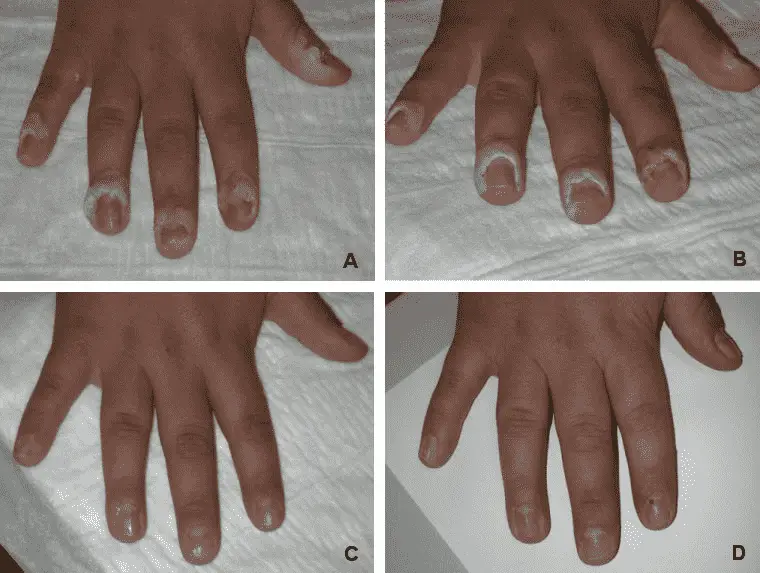Infrared Light Therapy Meaning, Comparison and Benefits
Infrared light therapy is a medical procedure involving the controlled projection of thermally-charged infrared waves unto a given part of the body, to improve blood circulation and treat various ailments. This article discusses infrared light therapy meaning, comparison and benefits, as outlined below;
-Infrared Light Therapy Meaning and Functions
-Infrared Vs Red Light Therapy
-Infrared Light Treatment Benefits
Infrared Light Therapy Meaning and Functions
Infrared light therapy is the deliberate exposure of parts of the body to infrared radiation from saunas or spectroscopes, in order to treat various ailments and to improve metabolism and health. (It is important to note that the term; 'infrared light' is not factual, since infrared radiation is not visible).
The key function of infrared therapy is improvement of blood circulation [11], which can reduce high blood pressure, and optimize the body's self-healing mechanism.
Infrared light therapy does the following;
1). Blood circulation improvement
2). Acute and chronic pain relief
3). Skin de-ageing
4). Inflammation treatment
5). Reduction of ultraviolet-induced apoptosis [7]
Infrared waves can also be used for thermal imaging, with which health conditions can be diagnosed.
In applying infrared radiotherapy for treatment purposes, it is important for exposure to be carefully controlled within the limits of safety, as overexposure can lead to unfavorable effects like skin damage and cataracts [1].
The length of time for infrared light therapy depends on the particular treatment or therapy being administered, the desired results, health and age status of patients involved, types and specifications of devices being used, and the intensity of infrared being administered.
Generally however, IR light therapy is a repetitive procedure that usually lasts between 5 and 60 minutes, and may be administered daily or weekly for up to a month.
Infrared Vs Red Light Therapy
Red light therapy is better than infrared for treating surface-restricted skin conditions, because the penetration of red light is less than that of infrared [3].
Infrared waves have a high penetration extent, because of their relatively long wavelength, which ranges from 700 nm to 1 mm [2].
Red light, on the other hand, is behind infrared in terms of wavelength, in the electromagnetic spectrum. This explains its shorter extent of material-penetration.
The ability of red light to serve as an electromagnetic inducer in phototherapy, can be attributed to its relatively-high frequency, which exceeds that of infrared radiation.
Red light therapy (RLT), also called LED therapy or low-level light therapy (LLLT) [12] is different from infrared therapy by not involving any significant projection or absorption of thermal energy. Rather, LED therapy involves immense amounts of light energy being projected unto a body or medium, mostly in order to achieve a photo-stimulating effect.
Infrared light therapy is better than red light therapy for cases where there is need to penetrate beyond the skin-surface. It is also ideal for conditions that require significant amounts of heat, and those which involve blood circulation, nervous conditions, and thermal degradation of toxins or malignant DNA, such as those of cancerous cells [6].
Red light therapy has the advantage of being less-invasive and more versatile than infrared (although infrared is also non-invasive). The use of red light therapy comes with fewer criteria and restrictions than the use of infrared, so that a broader range of patients can be treated using phototherapy than thermal radiotherapy.
People who should not use infrared therapy include those with low blood pressure, pregnancy, severe illness, heat-insensitivity and fever, among others.
Some negative effects of infrared therapy include; hyperpigmentation, skin damage, and scotoma. These can only occur with improper and/or overexposure.
On the other hand, people who should not use red light therapy include those on photo-sensitizing medications like hydrochlorothiazide, patients with open injuries, and those with photo-sensitizing health conditions.
The side effects of red light therapy are few, relatively un-severe and rare, and may include burning and stinging sensations, as well as redness of the skin. These effects are mostly associated with photo-sensitive patients, who are part of the restricted class for this therapy.
Below is a table summarizing the difference and comparison between infrared and red light therapies;
Comparison Criteria | Infrared Light Therapy | Red Light Therapy |
Level of Penetration | Internal | Surficial |
Type of EM used | Infrared Waves | Visible Light |
Relative Versatility | Low | High |
Restriction Basis | Health, Age-based | Sensitivity-based |
Side Effects | Hyperpigmentation, Scotoma, Skin Damage | Burning/Stinging, Redness |
Infrared Light Treatment Benefits
Infrared light treatment benefits are;
1). Non-Invasive Application
Infrared light treatment is non-invasive, meaning that it does not require surgical procedure to take effect.
This is a benefit because it minimizes cost, complexity and risk involved in IR treatment, while making it suitable for conditions involving internal organs, by reason of the long wavelength and penetrability of infrared waves.
An example of such applications is the use of IR waves to reduce stroke-related brain injury [9].
2). Multiple Functions
Another benefit of infrared light treatment lies in the fact that it can be applied for multiple health conditions.
Functions of infrared light therapy include; wound-healing, pain relief, detoxification, skin treatment, blood pressure optimization, treatment of inflammation and immune system-improvement [5].

3). Relative-Safety
When applied optimally, infrared light treatment is relatively safe.
This can be attributed to the fact that infrared waves are non-ionizing, unlike other electromagnetic waves like Gamma Rays and X-rays, which can be harmful to DNA, and are associated with carcinogenic gene mutations.
Infrared light is also less harmful to the skin than ultraviolet radiation, and can rather improve blood circulation and dermal health, so that it is applicable for wound-healing and de-ageing.
4). Diagnostic Relevance
In addition to its use for multiple forms of treatment, infrared light therapy is useful for diagnostic purposes.
This is especially effective when near-infrared (NIR) radiation with low energy intensity is used.
Diagnosis by infrared radiation works by the extraction of information on body metabolism, organ functioning and health status, by the nature of interaction of internal organs with infrared rays, in terms of absorption, reflection, autofluorescence, and scattering, all of which occur as IR collides with tissues and body fluids in its travel-path through the body [4].
The use of infrared for diagnostic purposes has been implemented for rheumatoid arthritis, as well as for cancer cases. Studies suggest that infrared diagnosis is more effective and accurate than X-ray diagnosis for breast cancer cases [10].
5). Therapy Supplementation
For cases whose treatment exceed the capability of radiotherapy, infrared light therapy can be used as a supplementary measure to improve the healing process.
This can be very helpful where the level of severity is high, as infrared offers a less-intensive, low risk option to complement the effects of other forms of treatment.
A simple example of infrared as a supplementary measure is the use of IR therapy to speed up the healing process and provide a soothing effect, during treatment of severe wounds [8].

Conclusion
Infrared light therapy refers to the use of penetrating thermal effect of infrared waves to improve body functioning, reduce toxins, and treat various ill-health conditions.
Functions of infrared light therapy are; blood circulation improvement, acute and chronic pain relief, skin de-ageing, inflammation treatment, and reduction of UV-induced apoptosis.
Infrared light treatment benefits are;
1. Non-Invasive Application
2. Multiple Functions
3. Relative-Safety
4. Diagnostic Relevance
5. Therapy Supplementation
References
1). Aly, E. M.; Mohamed, E. S. (2011). "Effect of infrared radiation on the lens." Indian Journal of Ophthalmology 59(2):97-101. Available at: https://doi.org/10.4103/0301-4738.77010. (Accessed 6 April 2023).
2). Dold, B. (2016). "Infrared Radiation in Modern Technology." Available at: https://doi.org/10.13140/RG.2.1.3430.4409. (Accessed 6 April 2023).
3). Enwemeka, C. S. (2000). "Attenuation and penetration of visible 632.8 nm and invisible infra-red 904nm light in soft tissues." Available at: https://www.jstage.jst.go.jp/article/islsm/13/1/13_1_95/_article. (Accessed 6 April 2023).
4). Fan, Y.; Lu, Y.; Sun, Y. (2022). "Editorial: Precise Diagnosis and Therapy Using Near-Infrared Light." Front Bioeng Biotechnol. 2022 Mar 1;10:864759. doi: 10.3389/fbioe.2022.864759. Available at: https://www.frontiersin.org/articles/10.3389/fbioe.2022.864759/full. (Accessed 6 April 2023).
5). Hamblin, M. R. (2017). "Mechanisms and applications of the anti-inflammatory effects of photobiomodulation." AIMS Biophys. 2017;4(3):337-361. Available at: https://doi.org/10.3934/biophy.2017.3.337. (Accessed 6 April 2023).
6). Huang, R. X.; Zhou, P. K. (2020). "DNA damage response signaling pathways and targets for radiotherapy sensitization in cancer." Signal Transduct Target Ther. 2020 May 1;5(1):60. Available at: https://doi.org/10.1038/s41392-020-0150-x. (Accessed 6 April 2023).
7). Jantschitsch, C.; Majewski, S.; Maeda, A.; Schwarz, T.; Schwarz, A. (2008). "Infrared Radiation Confers Resistance to UV-Induced Apoptosis Via Reduction of DNA Damage and Upregulation of Antiapoptotic Proteins." Journal of Investigative Dermatology 129(5):1271-9. Available at: https://doi.org/10.1038/jid.2008.362. (Accessed 6 April 2023).
8). Lin, Y. H.; Li, T. S. (2017). "The Application of Far-Infrared in the Treatment of Wound Healing: A Short Evidence-Based Analysis." J Evid Based Complementary Altern Med. 2017 Jan;22(1):186-188. Available at: https://doi.org/10.1177/2156587215623436. (Accessed 6 April 2023).
9). Strubakos, C..D.; Malik,.M.; Wider, J. M.; Lee, I.; Reynolds, C. A.; Mitsias, P.; Przyklenk, K.; Hüttemann, M.; Sanderson, T. H. (2020). "Non-invasive treatment with near-infrared light: A novel mechanisms-based strategy that evokes sustained reduction in brain injury after stroke." J Cereb Blood Flow Metab. 2020 Apr;40(4):833-844. https://doi.org/10.1177/0271678X19845149. (Accessed 6 April 2023).
10). Sun, Q. "Infrared light scanning in differentiating benign and malignant breast diseases." Zhonghua Wai Ke Za Zhi. 1992 May;30(5):293-4, 317-8. (Chinese). PMID: 1289007. Available at: https://pubmed.ncbi.nlm.nih.gov/1289007/. (Accessed 6 April 2023).
11). Wang, Y. H.; Cheng, F. Y.; Chao, Y. C.; Liu, C. Y.; Chang, Y. (2020). "Effects of Far-Infrared Therapy on Foot Circulation Among Hemodialysis Patients With Diabetes Mellitus." Biol Res Nurs. 2020 Jul;22(3):403-411. Available at: https://doi.org/10.1177/1099800420923730. (Accessed 6 April 2023).
12). Wunsch, A.; Matuschka, K. (2014). "A controlled trial to determine the efficacy of red and near-infrared light treatment in patient satisfaction, reduction of fine lines, wrinkles, skin roughness, and intradermal collagen density increase." Photomed Laser Surg. 2014 Feb;32(2):93-100. Available at: https://doi.org/10.1089/pho.2013.3616. (Accessed 6 April 2023).




